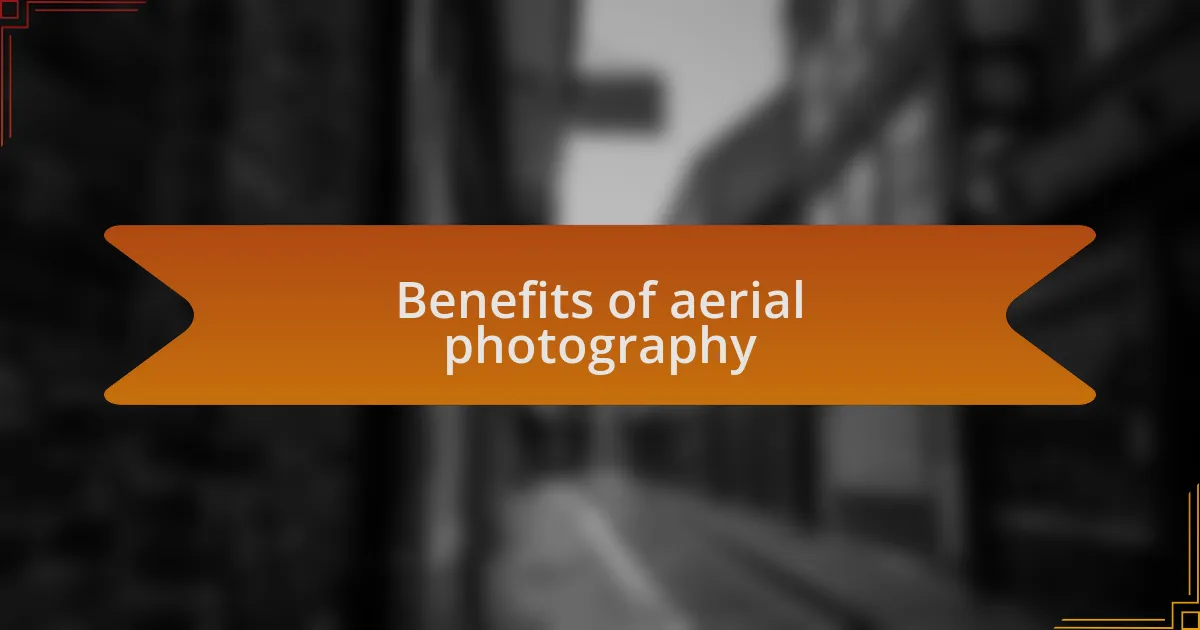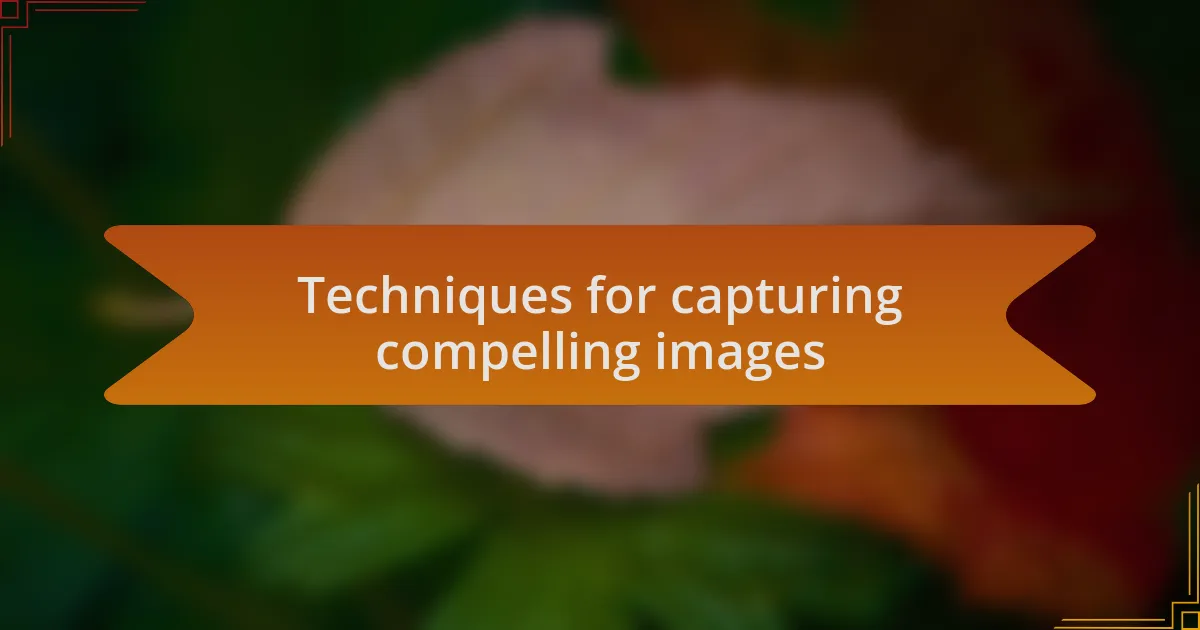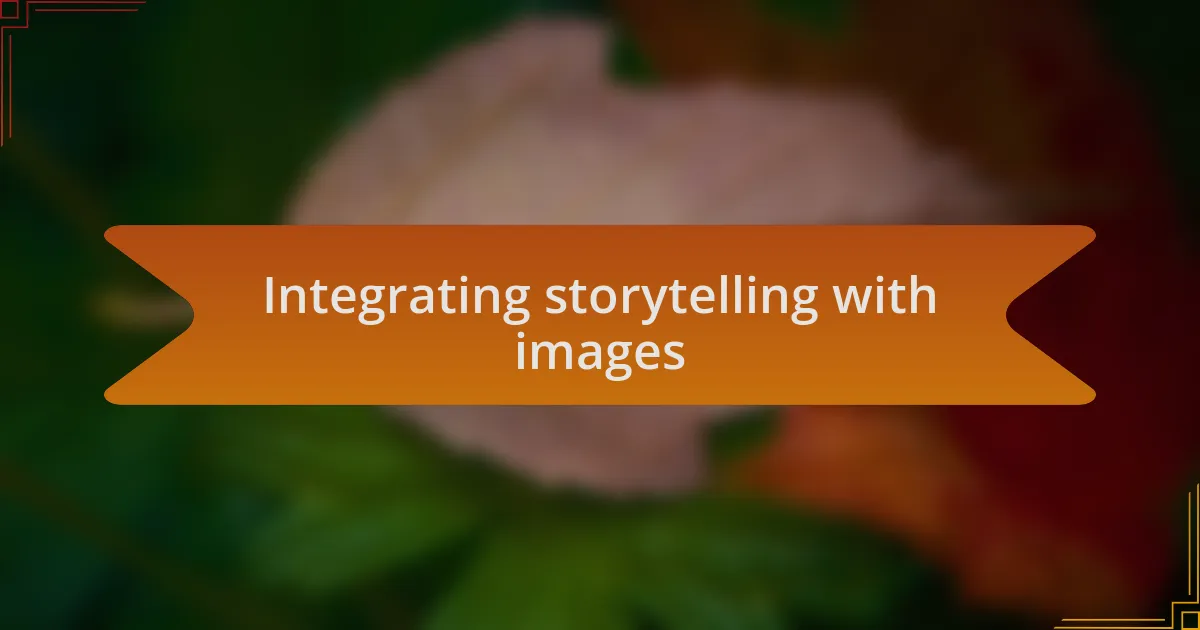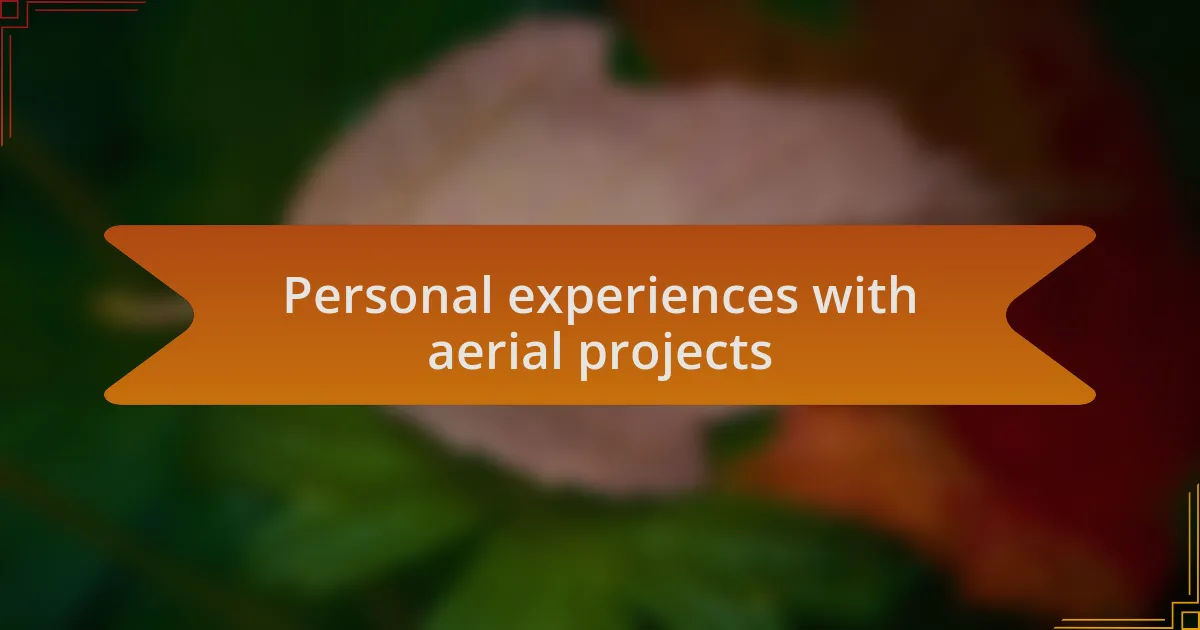Key takeaways:
- Drone mapping technology enhances the visualization of landscapes, revealing details often overlooked from the ground.
- Aerial photography provides unique perspectives and emotional connections, transforming how we perceive and relate to familiar environments.
- Techniques such as timing, angles, and movement are essential in capturing compelling aerial images that tell a story.
- Integrating storytelling with imagery evokes emotions and highlights the relationship between people and their environment, emphasizing conservation themes.

Understanding drone mapping technology
Drone mapping technology has transformed the way we capture and analyze geographical landscapes. Imagine being able to see intricate patterns of a sprawling coastline that are often missed from the ground. This technology employs high-resolution cameras and sophisticated software to create detailed maps and models, changing not just how we visualize space but how we make informed decisions based on that visual data.
When I first experienced drone mapping, I was astonished at the level of detail we could achieve in just a short flight. I remember hovering above a small island in Zanzibar and capturing images that revealed not only the topography but also the subtle changes in vegetation and land usage. How often do we overlook those vital details without the bird’s-eye view that drones provide?
The software used for processing these images is equally fascinating. It takes seemingly random snapshots and stitches them into coherent, usable data. On my projects, I’ve had the pleasure of collaborating with specialists who analyze these maps to provide insights. It’s incredible to see how data turns into narratives, guiding conservation efforts and sustainable development initiatives in real time.

Benefits of aerial photography
Aerial photography offers a unique perspective that simply can’t be matched. For instance, when I shot a series of images over the coral reefs of Zanzibar, I was struck by how the patterns of the water and the vibrant marine life came alive from above. It sparked a realization for me: what stories and mysteries do our landscapes hold that we can’t see from the ground?
One of the key benefits is capturing context. A single aerial shot can convey vast areas of information in a way that ground-level photos can’t. For example, while photographing the lush greenery of Jozani Forest, I was able to juxtapose the dense canopy with the surrounding developments. This contrast told a story of conservation versus urbanization, a narrative that was both compelling and urgent.
Moreover, I’ve found that the emotional impact of aerial imagery is profound. There’s something mesmerizing about seeing familiar places from an unfamiliar angle. The first time I edited a series of aerial photos showing the sunset over Mnemba Atoll, I felt a powerful connection to the island’s beauty that I hadn’t experienced before. Isn’t it amazing how a shift in perspective can ignite our passion for preserving these stunning landscapes?
Overview of Zanzibar’s landscapes
Zanzibar’s landscapes are a captivating blend of lush greenery, pristine shores, and stunning coral formations. As I soared above the island, I was engulfed by the rich tapestry of colors and textures below. The contrast between the deep blues of the Indian Ocean and the vibrant greens of the spice plantations truly showcased the island’s natural beauty. Have you ever looked at a map and felt drawn to a particular place? That’s how I felt, realizing the stories that each unique landscape could tell.
When wandering through the narrow streets of Stone Town, I often pause to appreciate the juxtaposition of historic architecture against the backdrop of palm-fringed beaches. From the sky, the intricate maze of alleyways is transformed into a stunning mosaic, emphasizing the island’s rich cultural heritage. I remember taking an aerial shot that captured the heritage buildings surrounded by the azure sea, which sparked reflections on how history and nature intertwine in Zanzibar’s charm.
Finally, the varying elevations across the island create striking visual narratives. For example, from the heights of the expansive cliffs at Jambiani to the tranquil beaches below, the perspectives I capture often make me contemplate the forces that shaped this land. Isn’t it incredible how the land tells a story of resilience and transformation? These are the insights I cherish, pairing artistic expression with a profound appreciation for Zanzibar’s ever-changing landscapes.

Techniques for capturing compelling images
When it comes to capturing compelling images, I’ve found that timing is everything. The golden hours—early morning and late afternoon—offer a stunning palette of light that can transform even the most ordinary scene into a masterpiece. I remember one morning at sunrise over the rice fields; the mist hanging low gave the landscape an ethereal quality. It felt like I was witnessing a world unraveling in slow motion, and in those moments, I learned how essential patience and awareness are in aerial photography.
In addition, experimenting with different angles can create unique perspectives that tell a story. Instead of just shooting straight down, I often tilt the camera to capture diagonal lines or leading paths that draw the viewer’s eye into the image. There was a time I shot from a higher altitude over the spice farms, and the resulting image resembled a patchwork quilt—a vivid representation of Zanzibar’s agricultural legacy. It made me think about how even within such beauty, there are tales of labor and tradition woven throughout the land.
Finally, incorporating movement into my shots adds a dynamic element that static images often lack. I like to track local fishermen in small boats as they navigate the waters, illustrating life in motion. One of my favorite experiences was capturing their daily catch against the backdrop of a vibrant sunset, a contrasting blend of human activity and the natural world. How do you think these stories unfold in moments of action? For me, it’s that blend of life and landscape that makes aerial photography feel alive.

Integrating storytelling with images
Integrating storytelling with images goes beyond just capturing a beautiful scene; it’s about evoking emotions and creating a narrative. I recall a day flying over the shores of Zanzibar, where I aimed to portray the lively interaction between the ocean and the local communities. The way the waves kissed the sandy beaches, juxtaposed with fishermen hauling in their nets, painted a picture of resilience and harmony. It made me wonder—what stories can each image tell about the connection between people and their environment?
Visual storytelling is also about context. One time, I focused on the bustling market in Stonetown, where vibrant colors and textures came to life through my lens. It wasn’t just the food or crafts that engaged me; it was the expressions of the vendors and shoppers that conveyed their experiences and culture. By zooming in on a seller’s joyful smile or a child’s awe, I felt like I was weaving their stories into a visual tapestry. How often do we pause and consider the narratives that lie just beneath the surface of an image?
Aerial photography can highlight broader themes while immersing the viewer in a specific moment. When I captured the sprawling mangroves along the coastline, it struck me how their intricate patterns symbolize both nature’s beauty and the fragility of our ecosystems. Looking at the image later, I felt a responsibility to share not just the visual allure but also the importance of protecting these environments. How does an image transform when it carries an urgent message? It’s that duality of beauty and awareness that makes storytelling through imagery so powerful and essential.

Personal experiences with aerial projects
In my experiences with aerial projects, I’ve found that perspective can dramatically alter the narrative. One memorable project involved capturing the contrast of urban development against the pristine landscapes of Zanzibar. As I gazed down from the drone, it became clear how the modern structures intertwined with traditional homes, telling a story of progress balanced with heritage. Isn’t it fascinating how a single frame can hold the history and the future of a place?
One particular day, I flew over the sugarcane fields during harvest time. The rhythmic patterns formed by workers bending and lifting their tools struck me deeply. From above, it was a dance of labor, reflected not only in the fields but in the faces of those toiling beneath the sun. Each swooping shot felt like I was paying homage to their hard work—how often do we recognize the effort behind our food?
I remember another project where I captured the serene beauty of the Zanzibar coastline at sunrise. Watching the golden rays slowly spill over the water, I couldn’t help but feel a profound sense of peace. It dawned on me that moments like these are fleeting yet eternal; I was translating an ephemeral experience into a visual lasting forever. Have you ever pondered how a single moment can resonate for years, simply because of the way it’s captured?